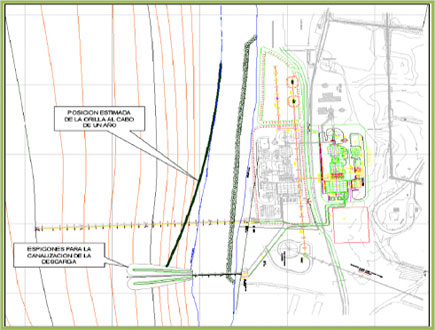Study Of Sedimentation & CWS Discharge

Description
The purpose of this study was the optimization of the location and relative arrangement of seawater collection and discharge works, to prevent the recirculation of water from discharge to catch; reduce within a radius of 100 meters (environment to catch), the variation in the temperature of the waters, so that it is not greater than 3 °C; minimize sand ingress into the Catchment; minimize the physical impact of uptake and discharge on sediment processes of the seabed.
For this, the background check and information of the physical parameters that influence the analysis and solutions, such as: Waves, tides, currents, seawater density and density gradients, seawater temperature and temperature gradients, etc. in addition to, the distribution of the granulometric characteristics of the bottom sediments. Diagnosis of the coastal morphodynamics of the sector under study. Calculations of the suspension of the bottom sediments by the combined action of waves and currents. Mathematical modeling of the diffusion and heat dispersion of the effluent of the discharge system. Analysis of sedimentary processes resulting from solutions affecting the coastal transport of sand by swell.
The study also included, the Diagnosis of Coastal Morphodynamics, calculation of swell conditions, application of the CORMIX heat diffusion mathematician model, calculation of sand ingress in CWS capture, thermal pen dispersion study, current measurements (Langranian and Eurelian), simulation scenario, application of the mathematical model OUTREY.